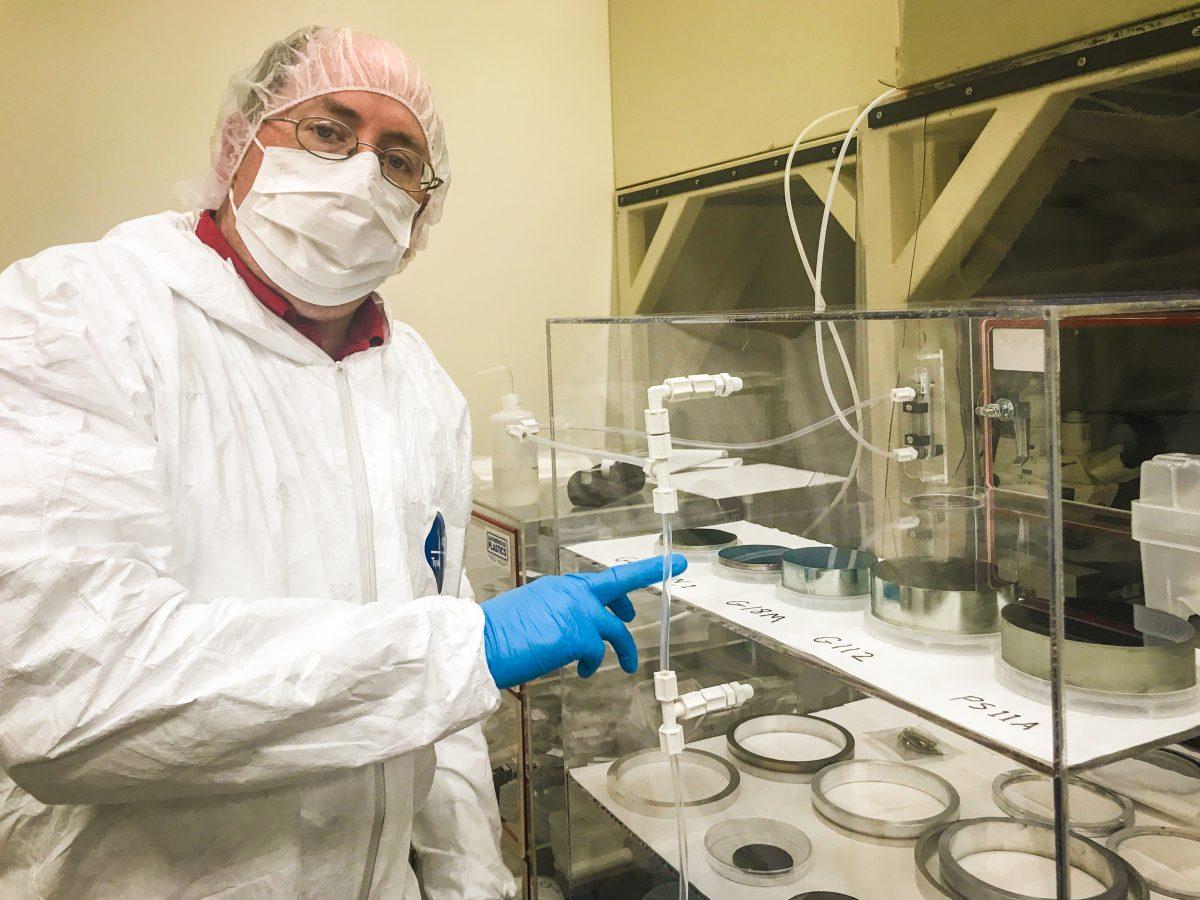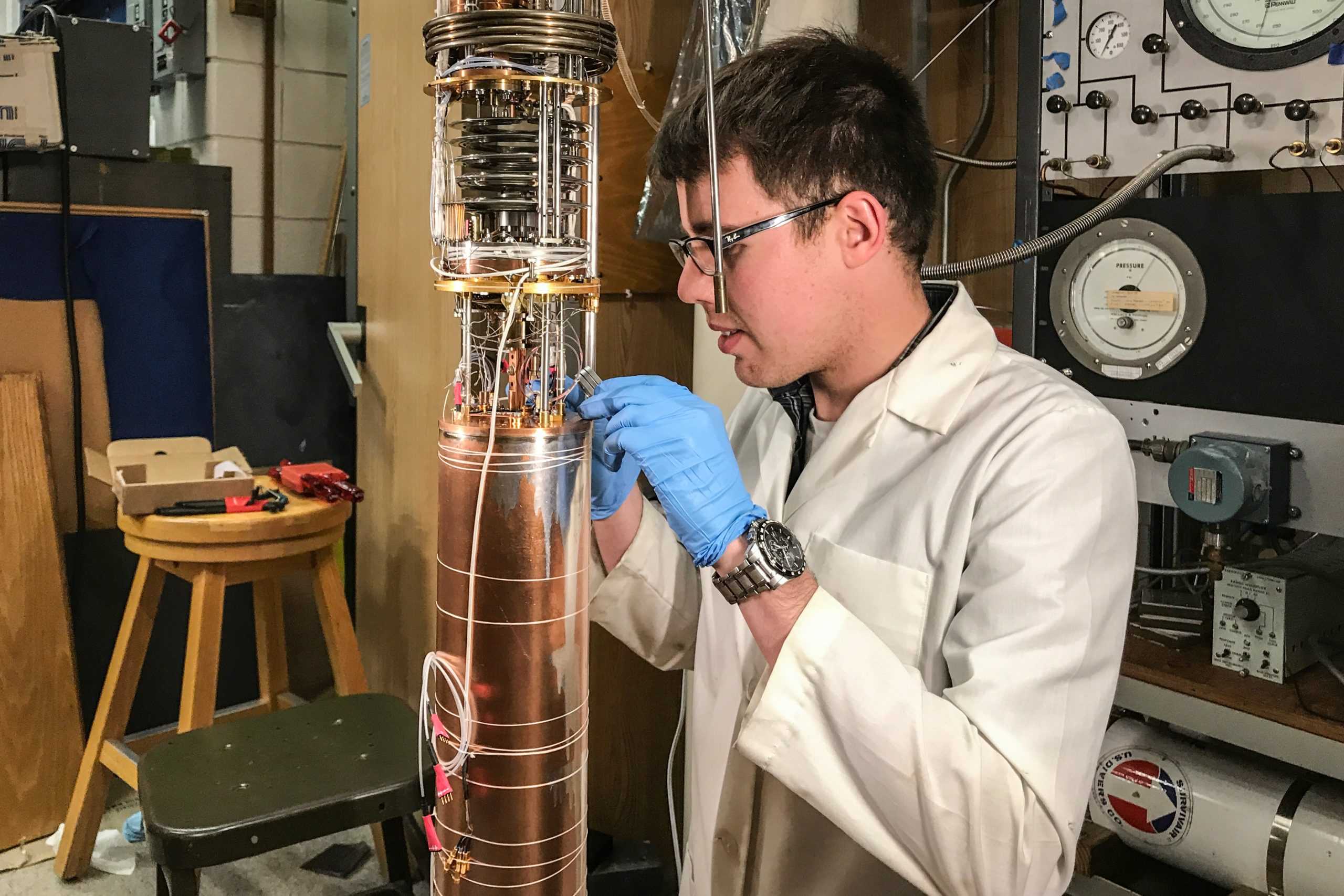Dark matter is all around. It is invisible to the naked eye and can be felt, but detecting it hasn’t been possible.
For 80 years, scientists have known that dark matter exists, but identifying it has been a challenge for physicists all around the world due to the weak interaction of dark matter, causing it to be confused with other particles.
The Mahapatra Group was created by Texas A&M in 2009 to focus on Cryogenic Dark Matter research. Their current project, which is funded by a federal grant they received of half a million dollars, is developing dark matter detectors. This grant adds to the prior received grants of $1.7 million.
According to Rupak Mahapatra, principal investigator of the Mahapatra Group said, this new unique grant is applied only towards the development of the next generation dark matter detector. The other previously received grants were spread out through a variety of needs.
“The impact of dark matter is huge,” Mahapatra said. “Dark matter produces a gravitational pull which makes the stars move much faster than they should. Approximately 85 percent of the galaxy is made up of dark matter, pulling in stars to move and confirming the existence of this matter.”
Although dark matter has such a large role in the galaxy, there is still no way to detect it due to its weak interactions.
“We have this dark matter that we are trying to detect and nobody has ever detected that because it is very weakly interacting, meaning billions [of dark matter particles] would pass through you. In fact, they are,” Mahapatra said. “It is almost like a host. It is passing through you and you don’t feel it because it is a very weak interaction … it is one of the biggest questions in physics.”
To put things into perspective, Mahapatra provided an analogy to explain the subtlety of dark matter, which makes difficult to detect.
“If I asked you, if you were driving a car and you get hit by another car, would you notice it?” Mahapatra said. “Most definitely yes. If you got hit by a rock, would you notice it? Maybe lightly. If you got hit by a small pebbles [would you notice it]? Maybe or maybe not. If you got bit by a mosquito, would you notice it? No. This is the same challenge. You don’t notice it, so it hardly changes anything in your life.”
Mahapatra said his team is collaborating with Stanford University to combine the parts they are working on individually into a single detector to hopefully be able to answer one of the biggest questions in physics.
After a decade of work at University of California–Santa Barbara, Mahapatra moved to Texas A&M eight years ago to continue his research in fabrication lab dedicated to dark matter research. Most universities provide fabrication labs for their students and faculty, but rarely are they used for only one purpose, Mahapatra said.
Fabrication is a process that is used to create the detectors. Given that a single particle can invalidate the process, the labs must be 100 times cleaner than an operation room.
Mahapatra said the process begins with raw crystals, first polishing off the crystal and making it flat, then depositing various layers of metals so it circuits.
“Next you do what we call photolithography,” Mahapatra said. “With the metals on top of the semiconductors, either germanium or silicon, these are called semiconductor detectors. Then you put the circuit map, essentially. Then you shine ultraviolet ray through it so it make an exposure, like photographic films. Then we do chemical processing. Then we inspect and package and then you have the final detector.”
Zack Wetzel, Ph.D. candidate and member of the Mahapatra group, said he became involved because of an increased interest in dark matter.
“There is a real thought out and well done science behind the theory of dark matter, the origin of dark matter and just what the potential properties of it could be and then using those ideas,” Wetzel said. “The experimentalists, like us and this group, we take those ideas and we try to come up with actual experiments, detectors and devices that could see those properties that dark matter has … The theorists figure out what to look for and we sorta figure out how to look for it.”
Fedja Kadribasic, physics graduate student and member of the Mahapatra group, works on the dilution refrigerator to test the detectors. This machine dilutes a mixture and provides assistance in developing the detectors to zero in on the dark matter particles versus the neutrinos. With this machine and facilities, exploring the new realms of dark matter is possible, according to Kadribasic.
“There is a combination of sorta dark matter mass and this so called cross section that hasn’t been explored yet and what that means is that there is some region of masses, of dark matter, that they just don’t have the equipment to actually be able to run-to actually be able to look for it,” Kadribasic said. “These kind of set ups, combined with the fabrication facility we have here, allow us to detect fabricate new kinds of detectors that can actually look for dark matter in those regions that nobody has been able to explore.”
Detecting the invisible
September 17, 2017
Photo by Photo by Kevin Chou
Mark Platt, instrumentation engineer, presents the detectors that are currently being made.
Donate to The Battalion
Your donation will support the student journalists of Texas A&M University - College Station. Your contribution will allow us to purchase equipment and cover our annual website hosting costs.
























